

Chem. J. Chinese Universities ›› 2021, Vol. 42 ›› Issue (8): 2617.doi: 10.7503/cjcu20210178
• Polymer Chemistry • Previous Articles Next Articles
HUANG Congcong1,2, ZHANG Baoqing1,2, LIU Chenyang1,2( )
)
Received:2021-03-16
Online:2021-08-10
Published:2021-08-05
Contact:
LIU Chenyang
E-mail:liucy@iccas.ac.cn
Supported by:CLC Number:
TrendMD:
HUANG Congcong, ZHANG Baoqing, LIU Chenyang. Predicting the Glass Transition Temperature of Polyimides: Group Additive Property Method and Assigning the Group Contributions to Unknown Groups[J]. Chem. J. Chinese Universities, 2021, 42(8): 2617.
| Group | Characteristic | Yg* | Mi | yg,i | Corrected yg,i | Corrected Yg,i |
|---|---|---|---|---|---|---|
| —CH2— | in main chains | 2.7 | 14.0 | 0.193 | 0.167 | 2.3 |
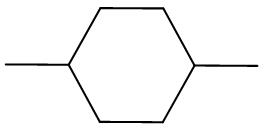 | cis | 19.0 | 82.1 | 0.231 | 0.202 | 16.6 |
| trans | 27.0 | 82.1 | 0.329 | 0.298 | 24.5 | |
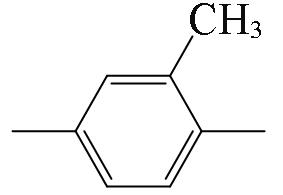 | 35.0 | 90.1 | 0.388 | 0.359 | 32.3 | |
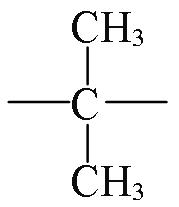 | ss | 26.0 | 42.1 | 0.618 | 0.615 | 25.9 |
| —O— | 4.0 | 16.0 | 0.250 | 0.220 | 3.5 | |
| —S— | 8.0 | 32.1 | 0.249 | 0.220 | 7.0 | |
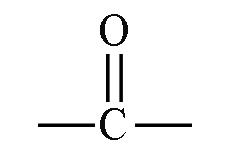 | c | 15.5 | 28.0 | 0.554 | 0.540 | 15.1 |
| cc | 19.0 | 28.0 | 0.679 | 0.688 | 19.3 | |
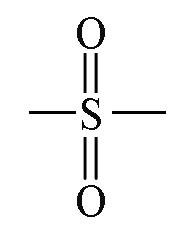 | n | 32.5 | 64.1 | 0.507 | 0.487 | 31.2 |
| c | 36.0 | 64.1 | 0.562 | 0.549 | 35.2 | |
| cc | 40.0 | 64.1 | 0.624 | 0.622 | 39.9 | |
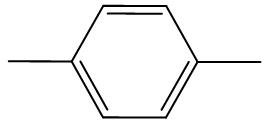 | n | 29.5 | 76.1 | 0.388 | 0.371 | 28.2 |
| c | 35.0 | 76.1 | 0.460 | 0.435 | 33.1 | |
| cc | 41.0 | 76.1 | 0.539 | 0.523 | 39.8 | |
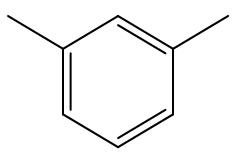 | n | 25.0 | 76.1 | 0.329 | 0.298 | 22.7 |
| c | 39.0 | 76.1 | 0.512 | 0.493 | 32.0 | |
| cc | 34.0 | 76.1 | 0.447 | 0.421 | 37.5 | |
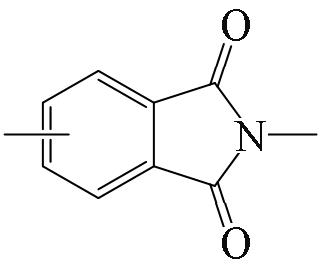 | c | 95.0 | 145.1 | 0.655 | 0.659 | 95.6 |
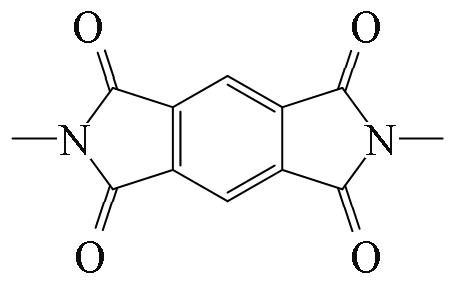 | 175.0 | 214.1 | 0.817 | 0.863 | 184.7 | |
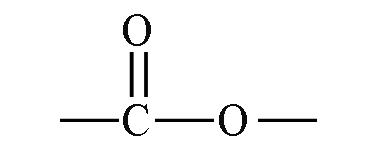 | c | 13.5 | 44.0 | 0.307 | 0.272 | 12.0 |
| cc | 15.0 | 44.0 | 0.341 | 0.307 | 13.5 | |
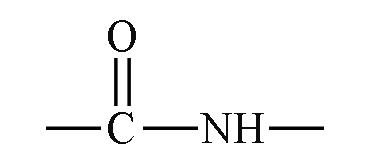 | c | 21.5 | 43.0 | 0.500 | 0.479 | 20.6 |
| cc | 30.0 | 43.0 | 0.698 | 0.720 | 30.9 | |
| —CH=== CH— | trans | 7.4 | 26.0 | 0.285 | 0.251 | 6.5 |
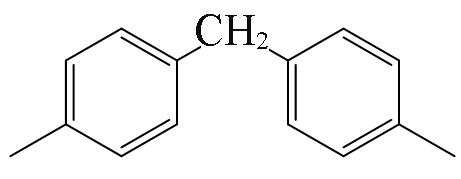 | 65.0 | 166.2 | 0.391 | 0.362 | 60.1 | |
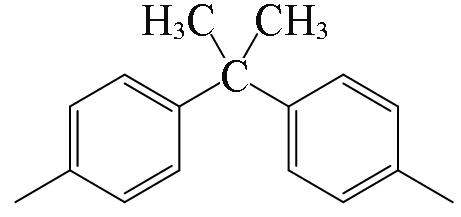 | 87.0 | 194.3 | 0.448 | 0.422 | 82.0 | |
| Group | Characteristic | Yg* | Mi | yg,i | Corrected yg,i | Corrected Yg,i |
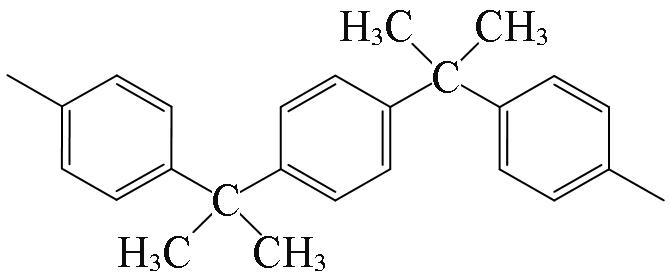 | 137.0 | 312.3 | 0.439 | 0.413 | 128.8 | |
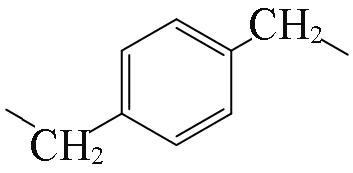 | 35.0 | 104.1 | 0.336 | 0.314 | 32.7 | |
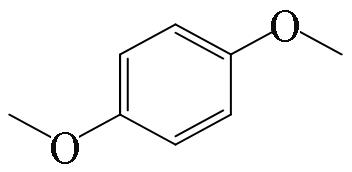 | 37.4 | 108.1 | 0.346 | 0.315 | 34.1 | |
 | 70.0 | 152.2 | 0.460 | 0.435 | 66.2 | |
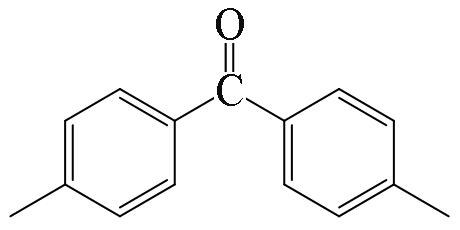 | 84.0 | 180.2 | 0.466 | 0.442 | 79.6 | |
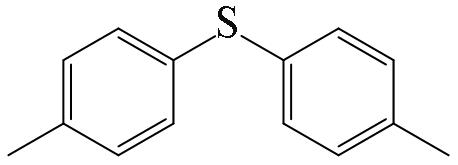 | 67.0 | 168.2 | 0.398 | 0.369 | 62.1 | |
 | 104.0 | 260.2 | 0.400 | 0.371 | 96.5 | |
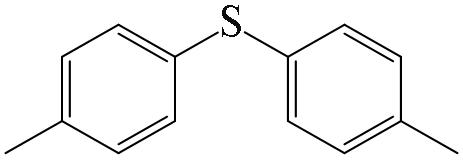 | 72.0 | 184.2 | 0.391 | 0.362 | 66.6 | |
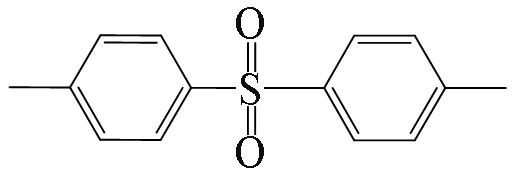 | 111.0 | 216.3 | 0.513 | 0.494 | 106.8 |
| Group | Characteristic | Yg* | Mi | yg,i | Corrected yg,i | Corrected Yg,i |
|---|---|---|---|---|---|---|
| —CH2— | in main chains | 2.7 | 14.0 | 0.193 | 0.167 | 2.3 |
 | cis | 19.0 | 82.1 | 0.231 | 0.202 | 16.6 |
| trans | 27.0 | 82.1 | 0.329 | 0.298 | 24.5 | |
 | 35.0 | 90.1 | 0.388 | 0.359 | 32.3 | |
 | ss | 26.0 | 42.1 | 0.618 | 0.615 | 25.9 |
| —O— | 4.0 | 16.0 | 0.250 | 0.220 | 3.5 | |
| —S— | 8.0 | 32.1 | 0.249 | 0.220 | 7.0 | |
 | c | 15.5 | 28.0 | 0.554 | 0.540 | 15.1 |
| cc | 19.0 | 28.0 | 0.679 | 0.688 | 19.3 | |
 | n | 32.5 | 64.1 | 0.507 | 0.487 | 31.2 |
| c | 36.0 | 64.1 | 0.562 | 0.549 | 35.2 | |
| cc | 40.0 | 64.1 | 0.624 | 0.622 | 39.9 | |
 | n | 29.5 | 76.1 | 0.388 | 0.371 | 28.2 |
| c | 35.0 | 76.1 | 0.460 | 0.435 | 33.1 | |
| cc | 41.0 | 76.1 | 0.539 | 0.523 | 39.8 | |
 | n | 25.0 | 76.1 | 0.329 | 0.298 | 22.7 |
| c | 39.0 | 76.1 | 0.512 | 0.493 | 32.0 | |
| cc | 34.0 | 76.1 | 0.447 | 0.421 | 37.5 | |
 | c | 95.0 | 145.1 | 0.655 | 0.659 | 95.6 |
 | 175.0 | 214.1 | 0.817 | 0.863 | 184.7 | |
 | c | 13.5 | 44.0 | 0.307 | 0.272 | 12.0 |
| cc | 15.0 | 44.0 | 0.341 | 0.307 | 13.5 | |
 | c | 21.5 | 43.0 | 0.500 | 0.479 | 20.6 |
| cc | 30.0 | 43.0 | 0.698 | 0.720 | 30.9 | |
| —CH=== CH— | trans | 7.4 | 26.0 | 0.285 | 0.251 | 6.5 |
 | 65.0 | 166.2 | 0.391 | 0.362 | 60.1 | |
 | 87.0 | 194.3 | 0.448 | 0.422 | 82.0 | |
| Group | Characteristic | Yg* | Mi | yg,i | Corrected yg,i | Corrected Yg,i |
 | 137.0 | 312.3 | 0.439 | 0.413 | 128.8 | |
 | 35.0 | 104.1 | 0.336 | 0.314 | 32.7 | |
 | 37.4 | 108.1 | 0.346 | 0.315 | 34.1 | |
 | 70.0 | 152.2 | 0.460 | 0.435 | 66.2 | |
 | 84.0 | 180.2 | 0.466 | 0.442 | 79.6 | |
 | 67.0 | 168.2 | 0.398 | 0.369 | 62.1 | |
 | 104.0 | 260.2 | 0.400 | 0.371 | 96.5 | |
 | 72.0 | 184.2 | 0.391 | 0.362 | 66.6 | |
 | 111.0 | 216.3 | 0.513 | 0.494 | 106.8 |
| Ar | Structure | Tg,exp*/K | Yg,cal | Tg,cal | ΔTgb/K |
|---|---|---|---|---|---|
| PDA | 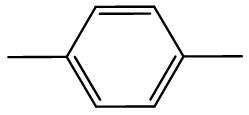 | 584 | 275 | 591 | -7 |
| 25DAT | 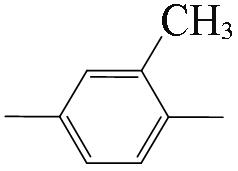 | 591 | 278 | 585 | 6 |
| 4,4'?DDM | 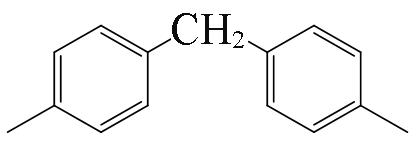 | 559 | 295 | 557 | 2 |
| ASD | 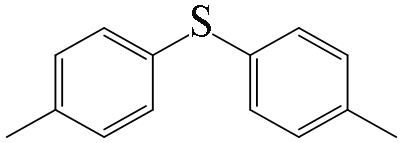 | 553 | 299 | 551 | 2 |
| 1,4,4?APB |  | 538 | 314 | 533 | 5 |
| 1,3?BABB | 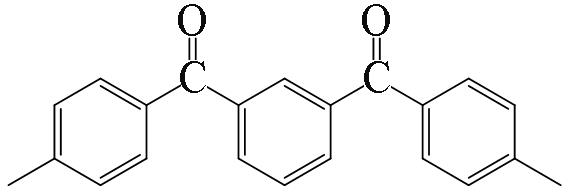 | 509 | 348 | 507 | 2 |
| 1,3,3?APB |  | 479 | 336 | 502 | -23 |
| 3,3'?ODA |  | 517 | 308 | 536 | -19 |
| m?PDA | 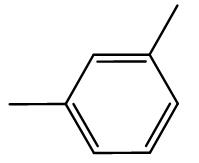 | 548 | 279 | 582 | -34 |
| 4,4'?ODA | 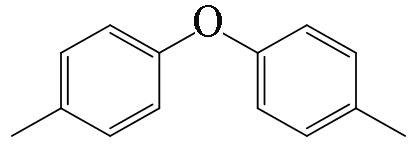 | 565 | 294 | 558 | 7 |
| 4,4'?DDS |  | 579 | 278 | 585 | -6 |
| 1,3,4?APB |  | 505 | 327 | 515 | -10 |
| BAPB | 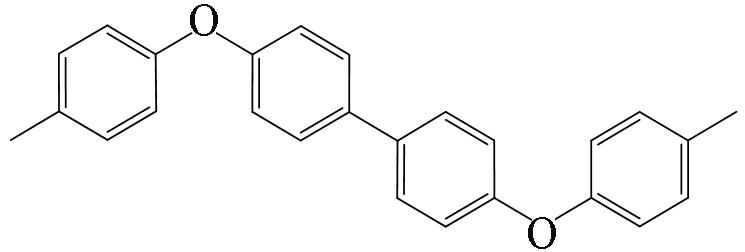 | 550 | 328 | 520 | 30 |
| BAPP |  | 518 | 337 | 513 | 5 |
| 4,4'?BAPS | 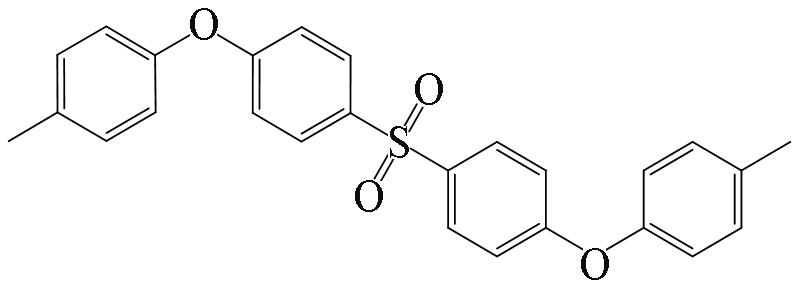 | 551 | 325 | 529 | 22 |
| Ar | Structure | Tg,exp*/K | Yg,cal | Tg,cal | ΔTgb/K |
|---|---|---|---|---|---|
| PDA |  | 584 | 275 | 591 | -7 |
| 25DAT |  | 591 | 278 | 585 | 6 |
| 4,4'?DDM |  | 559 | 295 | 557 | 2 |
| ASD |  | 553 | 299 | 551 | 2 |
| 1,4,4?APB |  | 538 | 314 | 533 | 5 |
| 1,3?BABB |  | 509 | 348 | 507 | 2 |
| 1,3,3?APB |  | 479 | 336 | 502 | -23 |
| 3,3'?ODA |  | 517 | 308 | 536 | -19 |
| m?PDA |  | 548 | 279 | 582 | -34 |
| 4,4'?ODA |  | 565 | 294 | 558 | 7 |
| 4,4'?DDS |  | 579 | 278 | 585 | -6 |
| 1,3,4?APB |  | 505 | 327 | 515 | -10 |
| BAPB |  | 550 | 328 | 520 | 30 |
| BAPP |  | 518 | 337 | 513 | 5 |
| 4,4'?BAPS |  | 551 | 325 | 529 | 22 |
| Group | Stucture | Mi | Assigned Yg |
|---|---|---|---|
| 6FDA[ | 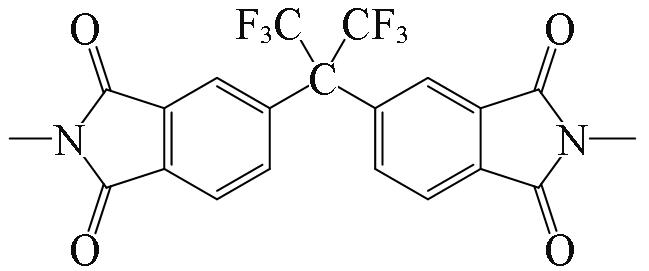 | 440.3 | 278.6 |
| 3,3'?ODPA[ | 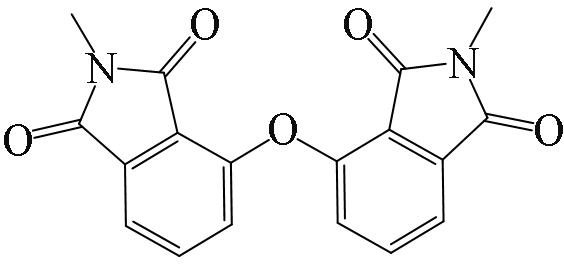 | 306.3 | 190.7 |
| 3,4'?ODPA[ | 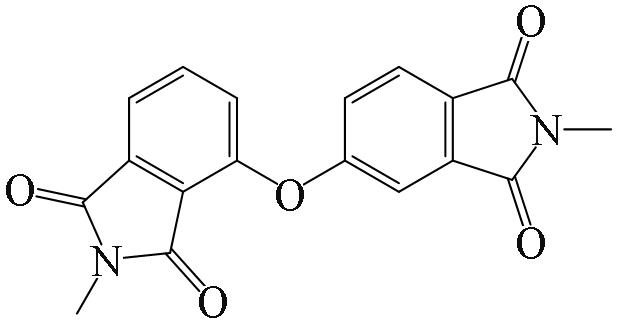 | 306.3 | 193.0 |
| 3,3'?TDPA[ | 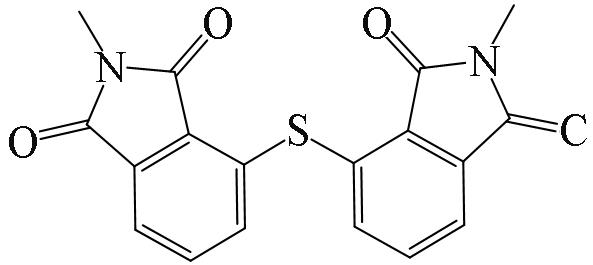 | 322.4 | 215.2 |
| 3,4'?TDPA[ | 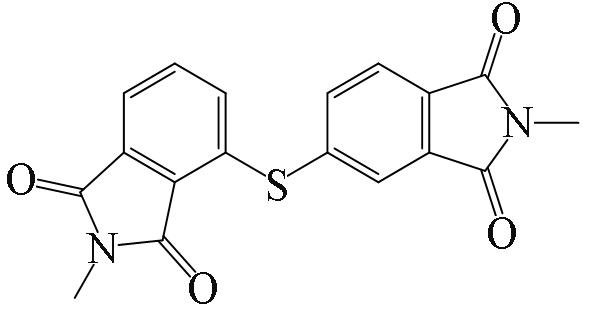 | 322.4 | 211.3 |
| 2,3,6,7?NDTA[ | 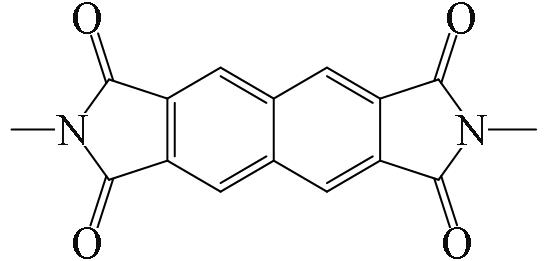 | 264.3 | 240.7 |
| 1,4,5,8?NDTA[ | 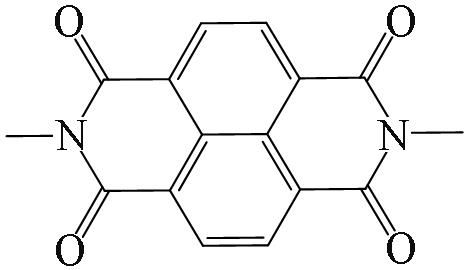 | 264.3 | 265.4 |
| 1,5?Pyridyl[ | 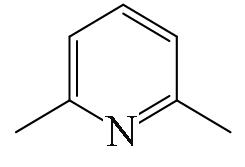 | 77.2 | 30.2 |
| 1,5?Naphthyl[ | 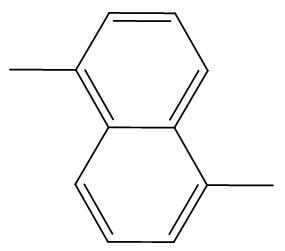 | 126.2 | 50.0 |
| 1,1'?Binaphthyl[ | 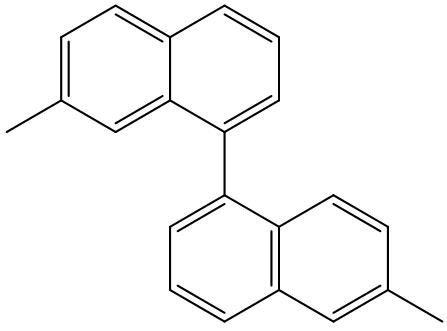 | 252.4 | 146.8 |
| 2, 3?Naphthyl[ | 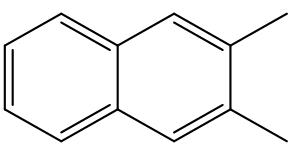 | 126.2 | 61.3 |
| 1,2?Phenyl[ | 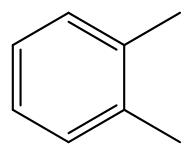 | 76.2 | 29.3 |
| 2,5?Trifluoromethyl phenyl[ | 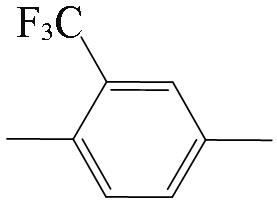 | 144.2 | 76.8 |
| Group | Stucture | Mi | Assigned Yg |
|---|---|---|---|
| 6FDA[ |  | 440.3 | 278.6 |
| 3,3'?ODPA[ |  | 306.3 | 190.7 |
| 3,4'?ODPA[ |  | 306.3 | 193.0 |
| 3,3'?TDPA[ |  | 322.4 | 215.2 |
| 3,4'?TDPA[ |  | 322.4 | 211.3 |
| 2,3,6,7?NDTA[ |  | 264.3 | 240.7 |
| 1,4,5,8?NDTA[ |  | 264.3 | 265.4 |
| 1,5?Pyridyl[ |  | 77.2 | 30.2 |
| 1,5?Naphthyl[ |  | 126.2 | 50.0 |
| 1,1'?Binaphthyl[ |  | 252.4 | 146.8 |
| 2, 3?Naphthyl[ |  | 126.2 | 61.3 |
| 1,2?Phenyl[ |  | 76.2 | 29.3 |
| 2,5?Trifluoromethyl phenyl[ |  | 144.2 | 76.8 |
| Polyimide | Tg,exp./K | Yg,cal. | Tg,cal./K | ?Tgb/K |
|---|---|---|---|---|
| 1 | 498 | 52.5 | 492 | 6 |
| 2 | 488 | 42.0 | 507 | -19 |
| 3 | 453 | 44.4 | 473 | -20 |
| 4 | 491 | 59.1 | 468 | 23 |
| 5 | 450 | 42.0 | 467 | -17 |
| 6 | 491 | 46.9 | 501 | -10 |
| 7 | 475 | 43.4 | 489 | -14 |
| 8 | 480 | 45.3 | 490 | -10 |
| 9 | 488 | 55.7 | 468 | 20 |
| 10 | 533 | 59.8 | 514 | 19 |
| 11 | 513 | 57.6 | 500 | 13 |
| Polyimide | Tg,exp./K | Yg,cal. | Tg,cal./K | ?Tgb/K |
|---|---|---|---|---|
| 1 | 498 | 52.5 | 492 | 6 |
| 2 | 488 | 42.0 | 507 | -19 |
| 3 | 453 | 44.4 | 473 | -20 |
| 4 | 491 | 59.1 | 468 | 23 |
| 5 | 450 | 42.0 | 467 | -17 |
| 6 | 491 | 46.9 | 501 | -10 |
| 7 | 475 | 43.4 | 489 | -14 |
| 8 | 480 | 45.3 | 490 | -10 |
| 9 | 488 | 55.7 | 468 | 20 |
| 10 | 533 | 59.8 | 514 | 19 |
| 11 | 513 | 57.6 | 500 | 13 |
| 1 | Cavagna A., Phys. Rep., 2009, 476(4), 51—124 |
| 2 | Berthier L., Tarjus G., Eur. Phys. J. E., 2011, 34(9), 1―10 |
| 3 | Binder K., Baschnagel J., Paul W., Prog. Polym. Sci., 2001, 28(1), 115―172 |
| 4 | Baker G. L., Vogel E. B., Smith M. R., Polym. Rev., 2008, 48(1), 64―84 |
| 5 | Muller C., Chem Mater., 2015, 27(8), 2740—2754 |
| 6 | Cangialosi D., Alegria A., Colmenero J., Prog. Polym. Sci., 2016, 54/55, 12―147 |
| 7 | van Krevelen D. W., Revised by te Nijenhuis K., Properties of Polymers, 4rdEd., Elsevier, Amsterdam, 2010, 129―188 |
| 8 | Katritzky A. R., Kuanar M., Slavov S., Hall C. D., Karelson M., Kahn I., Dobchev D. A., Chem. Rev., 2010, 110(10), 5714―5789 |
| 9 | Schut J., Bolikal D., Khan, I. J., Pesnell A., Rege A., Rojas R., Sheihet L., Murthy N. S., Kohn J., Polymer, 2007, 48(20), 6115―6124 |
| 10 | Bicerano J., Prediction of Polymer Properties, 3rd Ed., Marcel Dekker Inc., New York, 2002, 188―252 |
| 11 | Hopfinger A. J., Koehler M. G., Pearlstein R. A., Tripathy S. K., J. Polym. Sci. Part B: Polym. Phys., 1988, 26(10), 2007―2028 |
| 12 | Koehler M. G., Hopfinger A. J., Polymer, 1989, 30(1), 116―126 |
| 13 | Cypcar C. C., Camelio P., Lazzeri V., Mathias L. J., Waegell B, Macromolecules, 1996, 29(27), 8954―8959 |
| 14 | Yu X., Wang X., Li X., Gao J., Wang L., Macromol. Theory Simul., 2006, 15(1), 94―99 |
| 15 | Katritzky A. R., Rachwal P., Law K. W., Karelson M., Lobanov V. S., J. Chem. Inf. Comput. Sci., 1996, 36(4), 879―884 |
| 16 | Cao C, Z., Lin Y. B., J. Chem. Inf. Comput. Sci., 2003, 43(2), 643―650 |
| 17 | Afantitis A., Melagraki G., Makridima K., Alexandridis A., Sarimveis H., Iglessi⁃Markopoulou O., J. Mol. Struc⁃Theochem., 2005, 716(1―3), 193―198 |
| 18 | Sun H., Tang Y. W., Wu G. S., Macromol. Res., 2002, 10(1), 13―17 |
| 19 | Liu H., Zhao J. Y., Yao H. B., Guo H. Q., Gao L. X., Chem. J. Chinese Universities, 2017, 38(7), 1264―1269(刘会, 赵剑英, 姚海波, 郭海泉, 高连勋. 高等学校化学学报, 2017, 38(7), 1264―1269) |
| 20 | Liu Y., Xu X. Z., Mo S., Zhai L., He M. H., Fan. L., Chem. J. Chinese Universities, 2019, 40(1), 187―194(刘仪, 许晓洲, 莫松, 翟磊, 何民辉, 范琳. 高等学校化学学报, 2019, 40(1), 187―194) |
| 21 | Bai L., Zhai L., Wang C. O., He M. H., Mo S., Fan L., Chem. J. Chinese Universities, 2020, 41(4), 795―802(白兰, 翟磊, 王畅鸥, 何民辉, 莫松, 范琳. 高等学校化学学报, 2020, 41(4), 795―802) |
| 22 | Liu W. Q., Polym. Eng. Sci., 2010, 50(8), 1547―1557 |
| 23 | Hasegawa M., Horie K., Prog. Polym. Sci., 2001, 26(2), 259―335 |
| 24 | Ding M. X., Prog. Polym. Sci., 2007, 32(6), 623―668 |
| 25 | Chen C., Yokota R., Hasegawa M., Kochi M., Horie K., Hergenrother P., High Perform. Polym., 2005, 17(3), 317―333 |
| 26 | Sroog C. E., Prog. Polym. Sci., 1991, 16(4), 561―694 |
| 27 | Shimazu A., Miyazaki T., Maeda M., Ikeda K., J. Polym. Sci. Part B: Polym. Phys., 2000, 38(19), 2525―2536 |
| 28 | Hasegawa M., Horii S., Polym. J., 2007, 39(6), 610―621 |
| 29 | Yang C. P., Su Y. Y., Guo W. J., Hsiao S. H., Eur. Polym. J., 2009, 45(3), 721―729 |
| 30 | Mehdipour⁃Ataei S., Bahri⁃Laleh N., Iranian Polym. J., 2008, 17(2), 95―124 |
| 31 | Dhara M. G., Banerjee S., Prog. Polym. Sci., 2010, 35(8), 1022―1077 |
| 32 | Brereton M. G., Rusli A., Polymer, 1976, 17(5), 395―398 |
| 33 | Koča K., J. Mol. Struct., 1993, 291(2/3), 255―269 |
| 34 | Xu W. S., Douglas J. F., Xu X. L., Macromolecules, 2020, 53(12), 4796―4809 |
| 35 | Wang J. P., Yu Y. H., Guo Y. Q., Luo W., Hu W. B., Chinese J. Polym. Sci., 2021, 10.1007/s10118⁃021⁃2570⁃7 |
| 36 | Wang J. P., Yu Y. H., Guo Y. Q., Luo W., Hu W. B., Polymer, 2021, doi.org/10.1016/j.polymer.2021.123740 |
| 37 | Xu W. S., Douglas J. F., Sun Z. Y., Macromolecules, 2021, 54(7), 3001―3033 |
| [1] | QIU Xinsheng, WU Qin, SHI Daxin, ZHANG Yaoyuan, CHEN Kangcheng, LI Hansheng. Preparation and High Temperature Fuel Cell Performance of Ionic Crosslinked Sulfonated Polyimides for Proton Exchange Membranes [J]. Chem. J. Chinese Universities, 2022, 43(8): 20220140. |
| [2] | ZHAO Junyu, WANG Chunbo, WANG Chengyang, ZHANG Ke, CONG Bing, YANG Lan, ZHAO Xiaogang, CHEN Chunhai. Preparation and Performance of Thermally Conductive Expanded Graphite/Polyetherimide Composites [J]. Chem. J. Chinese Universities, 2022, 43(4): 20210800. |
| [3] | WANG Shoubai, WU Xiuming, SHU Chen, ZHONG Min, HUANG Wei, YAN Deyue. Gas Separation Performance of Polyimide Homogeneous MembranesContaining tert-Butyl Groups [J]. Chem. J. Chinese Universities, 2022, 43(11): 20220357. |
| [4] | WANG Shoubai, WU Xiuming, WU Jinming, TANG Yanfeng, SHU Chen, ZHONG Min, HUANG Wei, YAN Deyue. Synthesis and Properties of Soluble Transparent Polyimides Containing tert-Butyl and Isobutyl Groups [J]. Chem. J. Chinese Universities, 2021, 42(9): 2944. |
| [5] | ZHAO Baodong, LIU Yajing, PAN Yongfei, LIU Weixiao, GAO Fulei, WANG Yinglei. Synthesis and Properties of Energetic Plasticizer 2,2-Dinitropropyl Trifluoropropanoate [J]. Chem. J. Chinese Universities, 2021, 42(9): 2815. |
| [6] | ZHU Deshuai, ZHAO Jianying, YANG Zhenghui, GUO Haiquan, GAO Lianxun. Graphene Oxide/Polyimide Composites with High Energy Storage Density Based on Multilayer Structure [J]. Chem. J. Chinese Universities, 2021, 42(8): 2694. |
| [7] | WU Tao, FANG Yuting, DONG Jie, ZHAO Xin, ZHANG Qinghua. Synthesis and Properties of Polyimide Resin Containing Acetylene and Benzoxazine Double Crosslinking Moieties [J]. Chem. J. Chinese Universities, 2021, 42(6): 1978. |
| [8] | WANG Xianwei, KE Hongjun, YUAN Hang, LU Gewu, LI Liying, MENG Xiangsheng, SONG Shulin, WANG Zhen. High Temperature Resistant and Soluble Polyimide Resins and Their Composites [J]. Chem. J. Chinese Universities, 2021, 42(6): 2041. |
| [9] | XU Xiaozhou, LIU Yi, HE Minhui, MO Song, LAN Bangwei, ZHAI Lei, FAN Lin. Effect of Copolymerization Structure and Molecular Weight on Melt Fluidity and Thermal Properties of Thermoplastic Polyimide Resins [J]. Chem. J. Chinese Universities, 2021, 42(3): 919. |
| [10] | WAN Ren, SONG Fan, PENG Changjun, LIU Honglai. Group Contribution Method for Infinite Dilution Molar Conductivity of Unconventional Ions in Water [J]. Chem. J. Chinese Universities, 2021, 42(12): 3672. |
| [11] | BAI Lan, ZHAI Lei, WANG Changou, HE Minhui, MO Song, FAN Lin. Thermal Expansion Behavior of Amide-containing Polyimide Films with Ultralow Thermal Expansion Coefficient † [J]. Chem. J. Chinese Universities, 2020, 41(4): 795. |
| [12] | YIN Wenjing, LIU Xiao, QIAN Huidong, ZOU Zhiqing. Preparation and Oxygen Reduction Performance of Fe, N co-Doped arbon Nanoplate with High Density of Active Sites† [J]. Chem. J. Chinese Universities, 2019, 40(7): 1480. |
| [13] | LIU Tao,LI Wenjing,ZHANG Enshuang,ZHONG Jinyang,ZHANG Fan,LIU Yuanyuan,ZHAO Yingmin. Preparation and Properties of Flexible Cross-linked Polyimide Aerogels [J]. Chem. J. Chinese Universities, 2019, 40(2): 403. |
| [14] | WU Hongmei,LI Huiting,LI Yongcheng,WANG Hongqing,WANG Meng. Using Group Contribution Method and Molecular Dynamics to Predict the Glass Transition Temperature of Poly(p-phenylene isophthalamide)† [J]. Chem. J. Chinese Universities, 2019, 40(1): 180. |
| [15] | LIU Yi, XU Xiaozhou, MO Song, ZHAI Lei, HE Minhui, FAN Lin. Thermal Stability of Polyimide Resins Containing Siloxane Structure and Their High Temperature Structural Evolution [J]. Chem. J. Chinese Universities, 2019, 40(1): 187. |
| Viewed | ||||||
|
Full text |
|
|||||
|
Abstract |
|
|||||